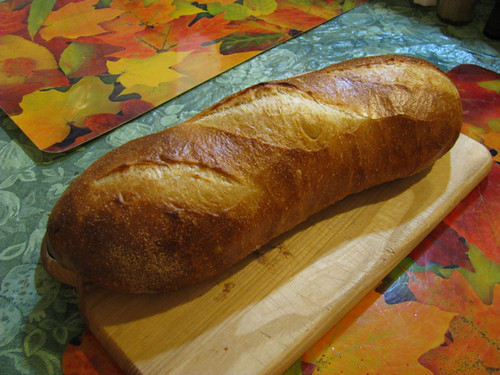Still baking
Despite all the server brou-ha-ha, I've still managed to bake a few times.

A standard Pain Sur Poolish loaf, still more-or-less using this recipe. Served with a pot of minestrone soup. My goal is to make one pot of soup a week all winter long and try as many new soup recipes as I can. Where there's soup, there's bread!
- Log in or register to post comments
- 3 comments
- View post
- Floydm's Blog
 Pizza Margarita: Lot's of big bubbles under the sauce.Sylvia
Pizza Margarita: Lot's of big bubbles under the sauce.Sylvia
 [/center]
The multigrain bread dough I made yesterday was turning out wonderfully. It was just the right consistency. It had risen to just the right level when it was time to shape it. I decided to make it into two loaves and four buns shaped like tabatières.
[/center]
The multigrain bread dough I made yesterday was turning out wonderfully. It was just the right consistency. It had risen to just the right level when it was time to shape it. I decided to make it into two loaves and four buns shaped like tabatières.